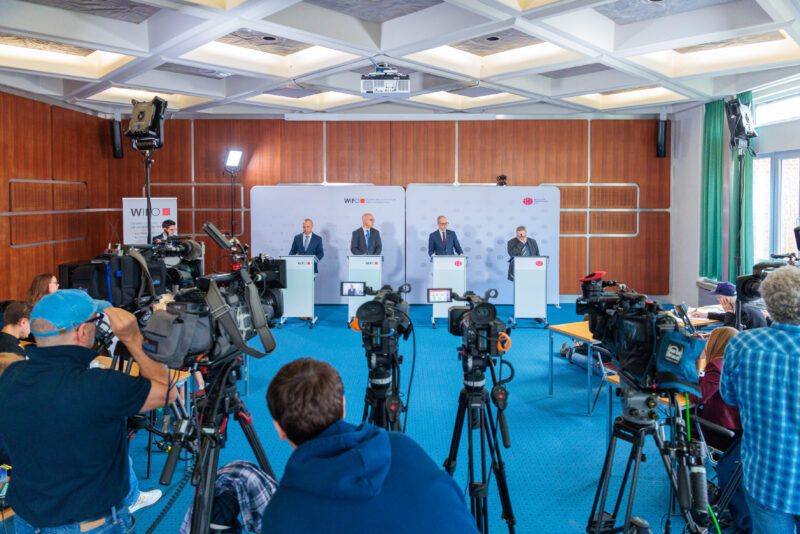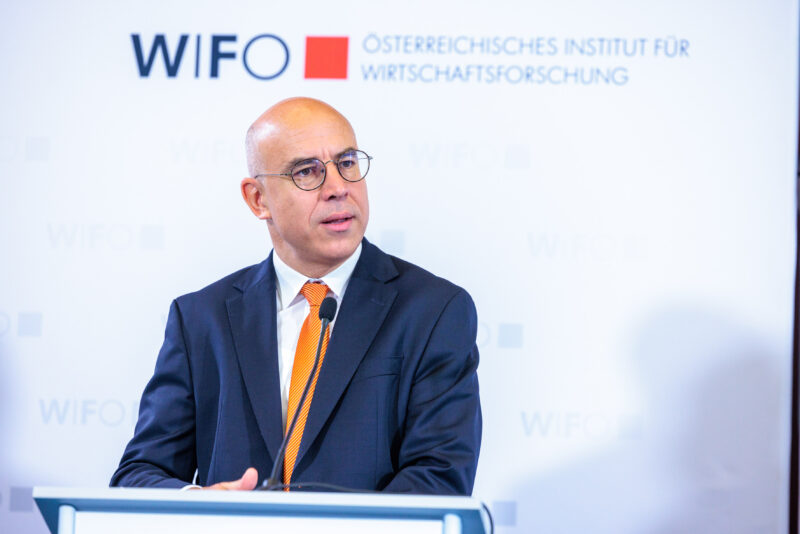
Economic Recovery Delayed
"Prosperity in Austria grew less strongly in 2022 than real GDP per capita indicates because high import prices reduced purchasing power. The command-basis GDP better reflects the development. It also shows that economic prosperity will not fall as sharply in 2023 as a recession would suggest", says Stefan Ederer, one of the authors of the current WIFO Economic Outlook.
Austria's GDP contracted in the summer half of 2023. Overall economic output is expected to fall by 0.8 percent in 2023 as a whole. Inflation is weighing on the purchasing power of private households, leading to stagnation in consumer spending. The global slump in the production and trade of goods, together with the after-effects of the energy price shock, also affect the Austrian industry, whose value added falls sharply in 2023.
The trough of economic activity is likely to be passed by the end of 2023. Rising real incomes will support private consumption in 2024 and 2025. By contrast, the recovery in industry will be somewhat delayed and is expected to gather pace from the second half of the year. Austria's economy will therefore only grow by 0.9 percent in 2024. GDP is expected to increase by 2 percent in 2025.
Due to the delayed recovery and a high negative growth carry-over from the previous year, industrial value added will also contract slightly in 2024 and will not expand strongly again until 2025. In contrast, construction is not expected to bottom out until 2024. The services sector is characterised by opposing trends, but overall, it is expected to grow noticeably in both 2024 and 2025.
The number of persons in active dependent employment rises significantly in 2023 due to a strong start to the year. The unemployment rate, on the other hand, will increase, partly because displaced persons from Ukraine have been included in the unemployment statistics since spring 2023. In the remainder of the forecast period, the labour market will temporarily cloud over due to the weak economy. Employment momentum will slow in 2024, but should pick up again in 2025. The unemployment rate will remain unchanged at 6.4 percent in 2024 and fall to 6 percent in 2025.
Inflation is expected to decline significantly in 2024 to an annual average of 4 percent. The fall in natural gas prices on the European wholesale market and the extension of the electricity price cap will dampen household energy prices in 2024. In 2025, inflation will fall further to an annual average of 3.1 percent. Energy prices are no longer likely to dampen inflation in 2025, while the upward trend in prices for industrial goods, food and, above all, services will remain persistent.
The public budget balance will improve significantly in 2023 due to the discontinuation of pandemic-related support measures. The general government deficit is reduced to 2 percent of GDP by 2025. Public debt decreases by around 5 percentage points over the forecast period and amounts to 73½ percent of economic output in 2025.

















